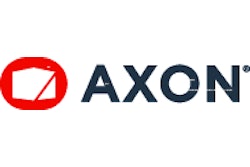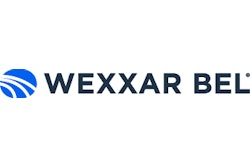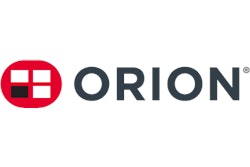Pro Mach's integrated nine-division capability as one of the largest single-source providers of packaging solutions in North America was highlighted at the Pack Expo Las Vegas tradeshow September 26-28 (see Pro Mach's integrated solution, published September 28). Showcased and in operation in its expansive booth was the actual packaging line that will be installed in December 2005 at Nashville, TN-based Fleetguard Inc., a leading provider of industrial filtration products. Pro Mach is the single source provider for the highly automated new line used to case, label, and palletize Fleetguard's wide range of industrial oil filters.
Packaging World learned that the equipment had not been preassembled, but was installed together as a complete line for the first time at the show.
Fleetguard's challenge
Fleetguard had required packaging for more than 100 stock-keeping units, and turned to Pro Mach, Inc. for a "packaged" solution. Fleetguard needed a comprehensive end-of-line packaging system designed to meet their needs in a timely, cost effective manner. The company did not want a time-consuming process involving several manufacturers attempting to integrate with other machines on the line one at a time.
Space constraints also limited the amount of square footage that could be dedicated to a new automated end-of-line packaging system. The Fleetguard industrial filters being packaged range in height from 6" to 12", in diameter from 3.8" to 4.7", and in weight from an average of 2 to 5.3 lb per filter. The filters are either case or bulk packed and require a nesting pattern of packaging so that the filter seams will stack uniformly without damaging the seam or filter.
Brenton Engineering Corp., a division of Pro Mach’s end-of-line packaging companies, designed an automated robotic packaging cell capable of both case and loose bulk packing out of the same automated packaging cell. It features not one, but two Fanuc robots, one for case loading, and one for palletizing. The system also integrates equipment from other divisions of Pro Mach including Wexxar, Belcor, and ID Technology.
The new automated packaging cell is earmarked for space formerly occupied by just one manual case erector and one manual case sealer at Fleetguard.
Line details
The line set up starts with a Wexxar 615T Case Erector that uses a 12' supply magazine for longer run time between replenishment. It can run HSC or RSC cases. Erecting cases at a rate of just more than eight cases per minute, the cases descend a discharge chute onto a conveyor leading to the case packing robot.
The empty case conveyor transports empty cases to the caseload station, next to the Belcor 252 Top Sealer. The Brenton-manufactured conveyor is a 7"-wide tabletop conveyor driven by an AC motor that runs at a speed of 60' per minute.
Arriving at the case load station, the leading empty case is stopped by an air cylinder. Once the case is in position, a set of overhead funnels drops into the case to open the flaps for easier product loading.
While the case sits at the load station, the filters enter on an infeed conveyor. When the filters are to be manually packed, a slide cylinder will push each filter off this conveyor and onto a manual pack conveyor.
When the filters are automatically packed, they will either pass through or be turned 180° by a servo turner to create a nested pattern in the case.
The filters are conveyed to the servo indexing flights where they decline into the infeed flights standing upright. The servo indexing flights consist of two tracks of eight flight pockets.
When a sensor determines a filter has entered the flight pocket, the track indexes one flight ahead and awaits the next filter. When the track is filled with proper number of filters, it advances to the case load station. The second track advances and fills its flight pockets independent of the first track.
The Brenton Robotic Case Packer uses a Fanuc 420iA (four-axis) robot. When the track is in case-load station position, the robot’s end-of-arm tooling (EOAT) picks the first three filters from the pick zone, lifts and moves them clear. The track advances the next three products into the pick zone. Next, the EOAT moves the first products against the second set, lowers and picks the remaining filters. After grabbing all the filters, the robot loads the awaiting case.
The EOAT uses six grippers to hold each filter individually. Mock-up testing has shown that these grippers will hold the filter, or a filter without a sleeve, securely with 25-psi air pressure. A Banner World Beam Q12 (50mm range) miniature photoelectric sensor provides individual product sensing on each gripper.
Tape sealing and labeling
After the case is filled, it is released from the funnel station and conveyed to the Belcor 252 Top Sealer. HSC cases do not require overhead taping and pass through the taper. An ID Technology Swing Arm Tamp Labeler applies a 3-3/8"x5" label to the side of the case.
The taped case then proceeds back into the cell to the Brenton palletizing robot. At the pick station, a minimum of two cases line up back to back. The second case is side clamped with a pneumatic slide, which allows the first case to be moved away from the second with a front surge release rail. A pneumatic slide cylinder drives this rail. The cases are picked one at a time for palletizing.
The palletizing robot uses a Fanuc Model 410 robot with four EOAT’s for various formats including picking individual cases from the infeed conveyor and tooling for pallets and vacuum tooling for slip sheets.
The booth display included an Orion stretch wrapper in-line after palletizing, which is not part of Fleetguard's installation.
Fleetguard's needs met
Fleetguard engineer Phillip Bryant says they selected Brenton among several companies because "Only Brenton offered us a comprehensive, integrated system, and proposed to provide all the components either through Brenton or other divisions of Pro Mach, Brenton’s parent company." Bryant says the other companies' solutions were more piecemeal, "not personalized to meet our specific requirements." Brenton engineer Jim Horton drafted a plan based on very specific details and used Fleetguard's actual floor plan. All phases of the project were conducted through Brenton engineer Jim Kimball.
"It was extremely convenient to work with one trained professional who interceded on our behalf for the integration and installation of all the components of the system," says Bryant. Fleetguard began working with Brenton in June 2005.
System benefits include speed, ergonomics
Bryant says that the benefits of the system for Fleetguard are capacity, automation, safety, space maximization and return on investment. "The Pro Mach system has the potential to increase line speed from 23 filters per minute to 50 filters per minute, which allows us to double our current capacity.
"Another big issue is ergonomics," Bryant says, pointing out that
Fleetguard’s industrial filter boxes can weigh 40 pounds per box. "If a crew is handling 10ꯠ or more filters per shift, the dangers of muscle sprain and other injuries due to the weight of the boxes are substantial."
Another major benefit for Fleetguard is space savings.
"All of this automation and doubling of capacity is taking place using the same floor space as the previous system," Bryant says. "We estimate cost savings of $150ꯠ to $250ꯠ per year with an estimated payback in two years based on the ergonomic and labor savings only; the productivity increase is an additional financial benefit."
Final thoughts
Fleetguard is very satisfied with Pro Mach.
"We had a lot of special requests, such as running partial [pallets]," says Bryant. "We needed the system to communicate that back to the internal computers. Pro Mach’s engineers created an operator interface that automatically times out in a predetermined amount of time. This allows the partial pallet to be discharged, again, automatically. The way the system is able to print the label on a partial skid is truly amazing. Since the label system is also interfaced to automatically print a partial label, the system does a count and communicates to the labeler the physical number to print on the label."
That's done by a second ID Technology labeler that applies a 4"x6" label; after the last case for a pallet is picked, the robot presents it to the labeler before it is stacked.
"Looking back at this project, the main thing I will remember is telling the Pro Mach team that the key to future projects was doing a bang-up job on this project," sums Bryant. "Jim Horton started building a relationship with us immediately and truly did a great job."
For all these reasons, Fleetguard is considering another Pro Mach line in the same facility, and possibly other manufacturing plants worldwide.




























